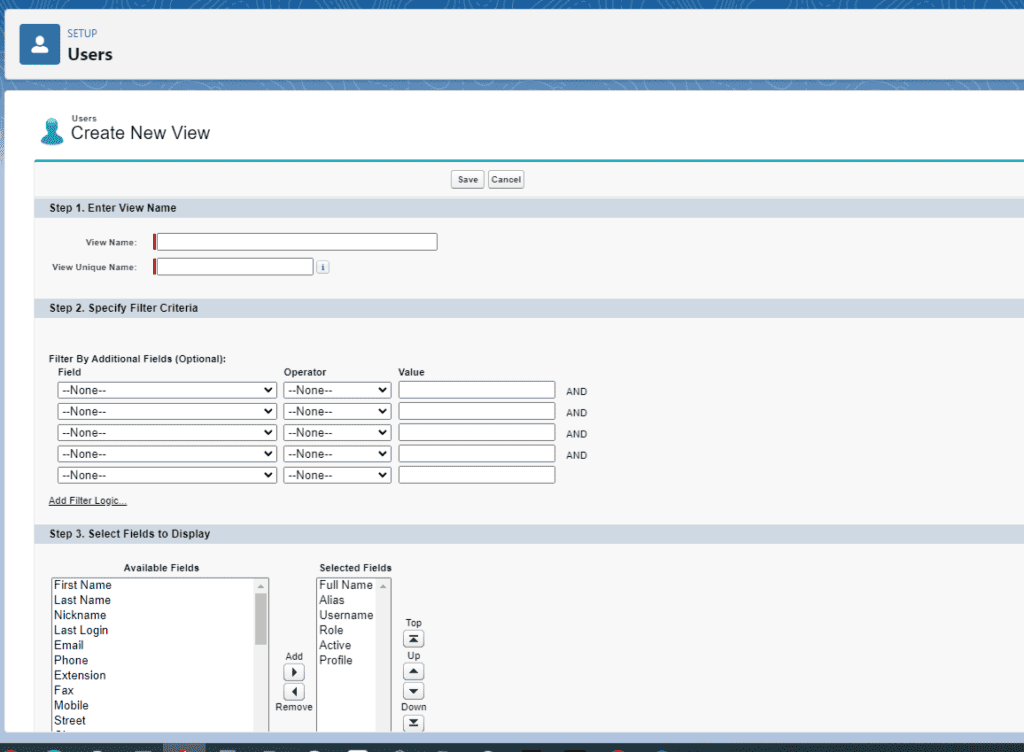It is not actually possible to delete a Salesforce user, and for good reasons which we will explain in this article. If you want to remove the ability for one of your users to access your Salesforce Org then you have the option to either freeze their access or deactivate them.
Freezing the access of a user is an effective Salesforce user management technique to immediately lock someone out of your Org while you investigate something (cybersecurity threat/bad intentions) and determine whether deactivation is appropriate.
It is also an effective way to lock someone out who you plan to deactivate, while you perform some required administrative tasks that need to be completed before you can deactivate (i.e. adjust a custom hierarchy/approval process).
Table of Contents
Why Salesforce User Deletion Is Not Possible
Though it is important to have the ability to lock a user out of your Org (temporarily or permanently), and re-assign licenses to another user, keeping the record of that user in your system is important for reasons I will explain below.
RELATED RESOURCE: Salesforce Help – Delete Users
Helps With Investigations (If Necessary)
If you are faced with the unfortunate situation of alleged or actual employee misconduct, being able to look at their activity (or lack of activity) in Salesforce, could be very useful .
You will easily be able to see how frequently they have been logging in, what activities they have logged, and what else they have been doing in the system.
Depending on the type of audit/field history tracking you may have set up, you may have access to useful data about what they have been doing in the system. If you deleted their user account completely, then these records would not be available.
Accurate and Useful Record History
If your Salesforce user has moved on organically, and there were no security or conduct concerns, then having oversight of a previous user’s activity can give subsequent users useful insight into the way accounts, contacts, and opportunities have been managed.
These activity records and other relevant data can help subsequent users inherit those relationships and seamlessly continue the business relationship.
For example, let’s say that ‘John’ has left the company, and ‘Jill’ has taken over John’s previous portfolio – If John’s profile has been deactivated, but not deleted, then Jill can see all John’s logged activities, and can talk with Accounts and Contacts about the ‘things they spoke about with John already’, and not ask them to give her a complete history of all previous conversation with previous account managers.
Whereas if Johns’s profile was deleted, you might be able to see records of previous activities (if they weren’t deleted too), but you may have no way of knowing who it was that was involved in certain phone calls and meetings, etc.
There are some other more ‘technical’ reasons why deletion would be problematic, given Salesforce is a relational database. But the key takeaway to note is that user deletion is not possible, but you can achieve the desired outcome by deactivation instead.
RELATED RESOURCE: Salesforce User Management
Managing a Large List of Salesforce Users
If one of the reasons you wanted to consider deleting a Salesforce user, was to make the list of users smaller and easier to navigate, then make sure you are aware of, and use the Salesforce user list filtering option to the maximum extent.

Salesforce provides some default filtering options (All Users/Active Users/Admin Users), but also provides the ability to create your own custom user lists, based on your own criteria. At a minimum, I recommend using the ‘Active Users’ list to minimize having to scroll through all your previous users.

You can filter your user list by the user characteristics, and then also choose which fields you want to display on the list.
If you have some very discrete user groups, it may be worth your time to create some lists for each group to make them easier to find and manage.